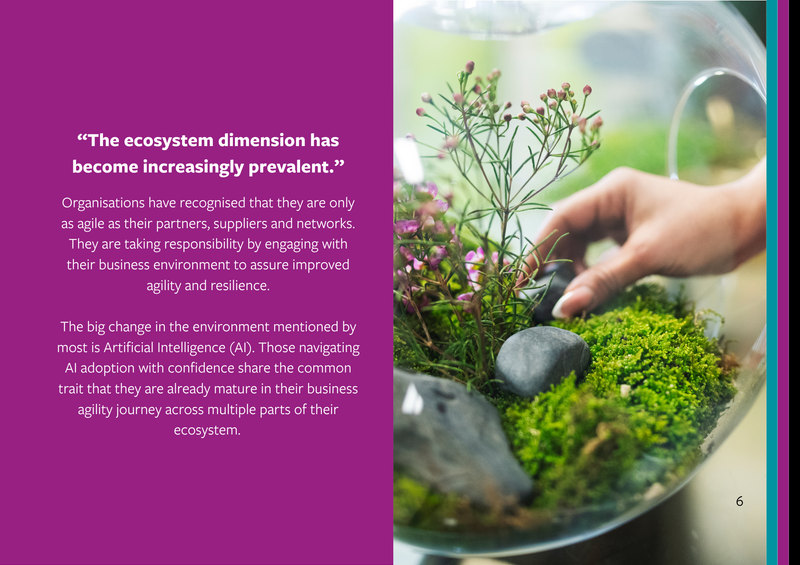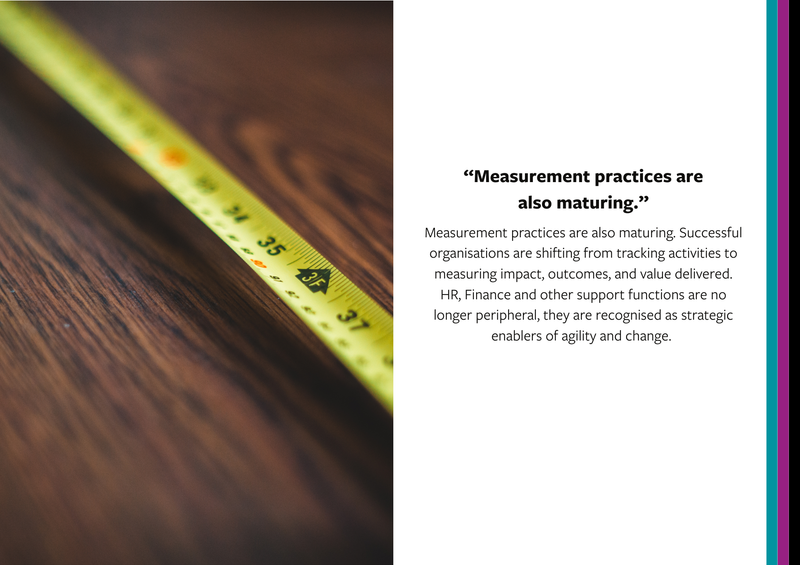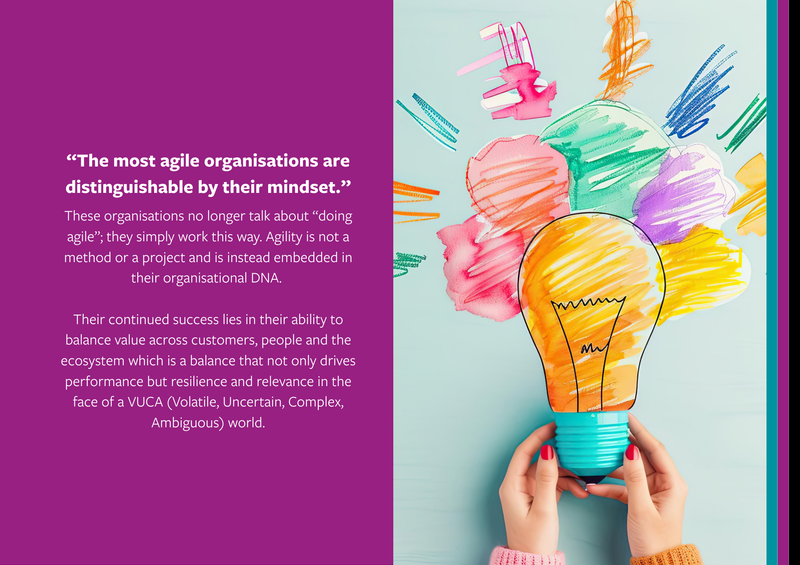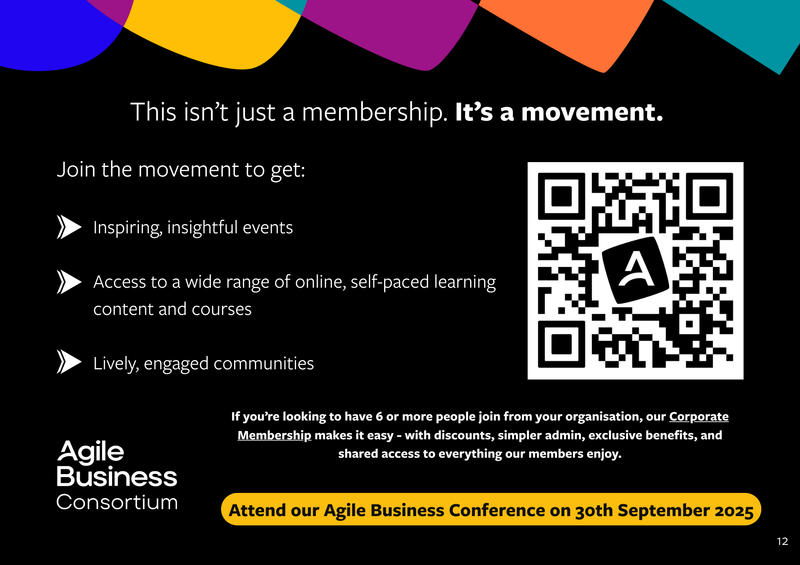12 Highlights from the Insights Report 2025
Foreword
Behind every agile organisation are people making conscious choices to adapt, learn and lead. The 2025 Agile Business Awards celebrate these organisations, not for following frameworks but for embracing agility as a way to thrive in a complex and unpredictable environment.
From this, emerged 12 key insights about how business agility is being practised in organisations today. Read on to find out what they are!

Introduction
Business Agility is helping organisations to be sustainably better in an ever changing world. We see organisations becoming better at balancing "being agile" with "doing agile" in order to provide value. Top-performing organisations recognise that mindset improvement requires intentional design.
They invest in psychological safety, learning mindsets and experimentation. Their leaders are visible, collaborative and distributed, demonstrating that leadership belongs across all levels of the organisation. Governance is evolving too; principles are enabling empowered teams to make fast, informed decisions within clear strategic boundaries.
12 Key Highlights



If you're interested in discovering what’s next in business agility and finding out more about the 12 highlights from the Insights Report 2025, watch our webinar: Leading with Agility: First Look at 2025 Insights.
We have also created a practical guide based on insights from the Agile Business Conference 2025.








